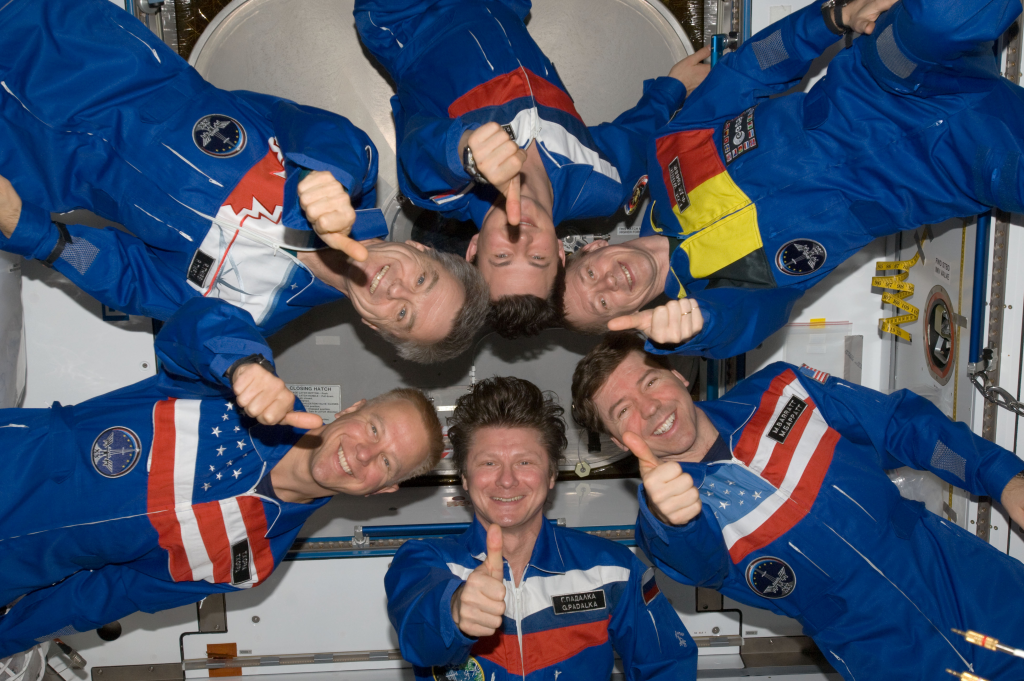NASA has done it again. For the third consecutive year, it ranked highest among large federal agencies for its employee satisfaction, according to the 2014 Best Places to Work in the Federal Government survey.
The big question is, of course, how NASA continues to do it. This is especially puzzling when overall federal employee satisfaction is at its lowest since the rankings launched in 2003. So how does NASA keep improving its scores, even as other agencies struggle to maintain current satisfaction ratings?
Some might think the answer is obvious. Who wouldn’t be happy being an astronaut or building a rover that literally flies through space to live on Mars? Fair point. But according to the survey, the lofty mission of NASA is only one reason that employees love coming to work each day.
That’s good news, because it means there are real benefits of working at NASA that could be applied to other agencies. Below, we highlight five lessons from NASA that can help make your employees happier:
1. Foster great leaders. No matter what the mission, employees are more likely to accomplish their goals if they have effective leaders to help them do it. What’s more, having leaders who are reliable and suited to their position increase employee satisfaction. For these reasons, NASA makes leadership development a priority, offering training and setting goals for every level of management at the agency.
Helpfully, NASA outlines its leadership roles, dimensions, and strategies on their website, so that other agencies can learn from them too. Even if your management structure contrasts with NASA’s, the core dimensions of business acumen, personal effectiveness, information and knowledge management, discipline competency, and people guidance should be focus areas for your leaders.
2. Match skills to missions. Satisfaction in your job doesn’t come from having a stellar mission. It comes from working towards a mission that you personally believe in, and that you have the skills to achieve. That’s what NASA teaches us. The agency’s results also show that relating specific roles to organizational success can also have a powerful impact on individual happiness.
At your agency, take the time to emphasize how each person’s contributions are integral to agency success. Where specific jobs aren’t clearly aligning to objectives, re-evaluate the role. It’s possible that the skills deployed in one role may be better suited to different tasks. In those cases, work to reassign employees to missions that better leverage their unique skill sets.
3. Provide training and development. Even if your staff have the necessary skills and leadership to achieve their goals, you run the risk of creating a complacent workforce if you don’t also offer them opportunities to stretch the limits of their abilities. NASA’s Agency Training and Development Office does just this. It provides training–informal and formal, inside and outside the agency–to its employees so they continually accrue new skills and knowledge.
For an agency whose mission is to pioneer new frontiers, this constant momentum is necessary. But it’s just as important to other agencies, because training offers new challenges and gives employees the tools needed to advance their careers.
4. Maintain work-life balance. Before you say that this is impossible to do at your agency, consider that–moreso than many other agencies–NASA’s budget is continually shrinking. Yet even with fewer resources the agency continues to maintain a healthy work-life balance for its employees. In fact, some cost-cutting measures are actually working to improve this balance. Teleworking is a prime example. NASA Administrator Charles Bolden challenged his agency to make teleworking opportunities available to all employees. Now, resources, tools, and testimonials have been published to support these initiative.
In addition to teleworking, NASA offers flexible working schedules, child care services, and wellness programs to improve employee work-life balance. Each of these programs received favorable reviews by employees, and are tactics easily transferred to other agencies.
5. Encourage innovation. You might say that innovation is the foremost goal of NASA, so it’s unsurprising that it ranked so highly in this category. But the Departments of State and Commerce—agencies dedicated to the oldest functions of trade and diplomacy—were also rated well, proving that it doesn’t take a new mission to engage employees. What actually engages employees is the idea that they can be apart of, and even lead, changes to their organization. Support and encouragement from the agency is crucial to fostering this feeling of potential. At your agency, it’s worth emphasizing an openness to employee-led innovation and creating channels for their ideas to be cultivated.
Interested in learning more from NASA? Check out their full report on the agency’s 2014 employee satisfaction results here. More results from the survey-at-large are also discussed in our blog, Happy to Work in Gov? Survey Says No.
Photo Credit: Flickr/NASA
